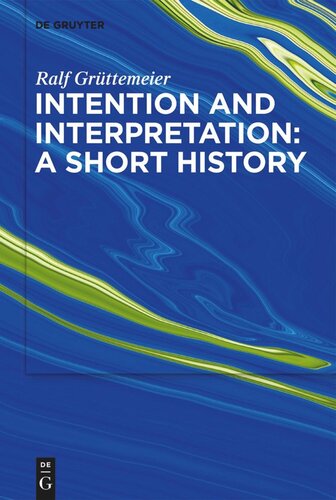

Most ebook files are in PDF format, so you can easily read them using various software such as Foxit Reader or directly on the Google Chrome browser.
Some ebook files are released by publishers in other formats such as .awz, .mobi, .epub, .fb2, etc. You may need to install specific software to read these formats on mobile/PC, such as Calibre.
Please read the tutorial at this link: https://ebookbell.com/faq
We offer FREE conversion to the popular formats you request; however, this may take some time. Therefore, right after payment, please email us, and we will try to provide the service as quickly as possible.
For some exceptional file formats or broken links (if any), please refrain from opening any disputes. Instead, email us first, and we will try to assist within a maximum of 6 hours.
EbookBell Team

4.3
78 reviewsOA transformation package 20212
Intention plays a complex role in human utterances. The interpretation of literary texts is a strong case in point: for about two hundred years there have been conflicting views about whether, and how much, authorial intention should matter when professional readers interpret literature. These debates grew increasingly fierce during the post-World War II period, the landmarks of which were the notions of intentional fallacy and the death of the author. Seventy-odd years later, there is still no consensus in sight. What has always been neglected in the debates around authorial intention, however, is a reflection on the historical dimension of the debate and how historically bound each of the theoretical positions in the debate were. This book focusses precisely on the historical dimension of authorial intention, providing a systematic historical reconstruction of the importance ascribed to it in literary texts from Classical Greece to the present day, and including a chapter on authorial intention in jurisdiction and legal interpretation from a historical perspective. The book reconstructs a typology of the most important concepts of intention in interpretation for diachronic and synchronic use. At the same time it offers insights from a field-theoretical perspective into how literary studies as a discipline works over time and how notions of intention and interpretation help create forms of literary knowledge.